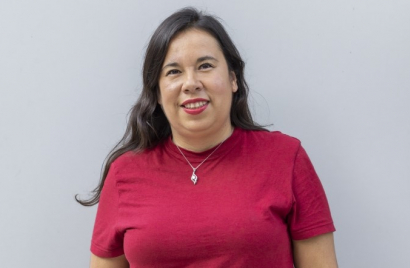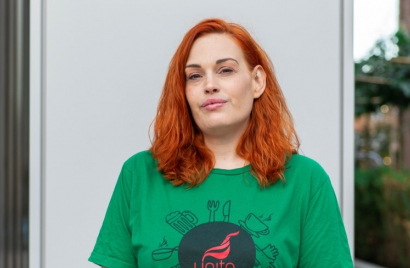
Virgin Media O2 launches summer online safety campaign
Virgin Media O2 and Internet Matters spotlight the importance of having conversations about online safety and starting them early

Portraits for ‘Life on the Living Wage’ highlight the importance of the movement by sharing personal experiences with pay

A new photography exhibition in London spotlights the positive impact of the Living Wage. Portraits from ten workers and community leaders are being used to illustrate the necessity of the Living Wage movement.
This week (6th - 12th November) is Living Wage Week and those who earn Living Wage and the employers who pay the rate are being celebrated in the form of a photography exhibition, created by the Living Wage Foundation.
Photographers Cian Oba-Smith and Andreia Afonso are responsible for the work shown in ‘Life on the Living Wage’. The series of portraits tells the stories of ten individuals, and their experiences earning based on the cost of living. Oba-Smith’s work is focused on authentically highlighting communities that have been misrepresented.
The exhibition celebrates employers who are choosing to pay their direct workers and third-party staff the Living Wage. Such employers include IKEA, the London Ambulance Service NHS Trust, and Mercato Metropolitano, which acts as the venue for the exhibition.
It's not about greed, it's about basic needs.
Sallie Baker, hospitality worker, Branch Secretary for Unite Hotel Workers and Vice Chair of the Hospitality Combine
As demonstrated in the exhibition, Living Wage makes a huge difference to people’s lives. Gina, a House Keeper and IAG Practitioner and Community Leader explained the terrible effects of an income that does not match the cost of living. When she was on a low wage, she explains, “I could afford £10 a week for groceries so I was surviving on staple foods like plain rice, which I would get for 30p. I was used to eating on a budget and regularly relied on large yoghurt pots for 80p or £1 burger vouchers. Every day, I felt like I was losing money, losing weight and losing sleep”.
As her circumstances have changed, Gina has focused on helping others out of the same situation. She now sits on the Making London a Living Wage City Steering group. Talking about her own experience, she says, “I will continue to fight [...] because people like me deserve a fair day’s pay for a fair day’s work”.
Similarly, Sallie Baker, another subject of the exhibition, shares her story alongside her portrait. She is a hospitality worker, ex-striker, and currently Branch Secretary for Unite Hotel Workers and Vice Chair of the Hospitality Combine. Baker explains, “The London Living Wage should be a baseline for any London employer”. She continues: “To be working 50+ hour weeks and still not being able to live is not 'working'. It's not about greed, it's about basic needs".


The ongoing cost of living crisis has only highlighted the need for fair pay. As of 2023, there are 3.5 million workers on low pay in the UK, and 575,000 in London alone. According to the Living Wage Foundation, 60% of low-paid workers have had to use a food bank in the past year, with 39% having to skip meals due to finances.
One way of helping the UK cope is by ensuring households have enough money to live. The Living Wage is a worker’s pay calculated according to the basic cost of living. At the moment, it is £13.15 an hour in London, and £12 an hour in the rest of the UK.
This rate is updated every year, and set independently at current expenses in the capital are the highest in the country. Unlike the minimum wage, it is not compulsory. Employers choose whether they pay the Living Wage or not. It is a higher rate than minimum wage, hence why not all employers sign up to the movement. Yet, the disparity between minimum and living wage is the reason why it is so valuable to highlight employers that do pay, given the rising cost of living which minimum wages are failing to meet. The exhibition both acknowledges the importance of paying a living wage, and encourages employees to sign up to the scheme.
The exhibition is part of the Making London a Living Wage City project, which is led by Citizens UK. Already, there has been some growth in support for the movement. Across the last two years, the number of Living Wage employers has more than doubled. In London, there are now 3,500 accredited employers, and 14,000 in the UK more widely.
Of all FTSE 100 companies, half pay Living Wage. These companies include: Aviva, Burberry, London Stadium, Brentford FC, and the Royal Albert Hall. Dan Cullen-Shute, Founder and Worldwide CEO of Creature, says he would like to see more advertising agencies join this list of accredited companies.
He explains, “As ever, it's an honour to be involved with Living Wage Week – especially when we have supported in the creation of such an exciting campaign that elevates those employers who are leading the way in paying people properly. In a year’s time, we’d love to see more ad agencies among them”.
From the 6th to the 10th of November, the photographs were on display at Mercato Metropolitano My Elephant Park. From the 11th the exhibition moves to Somerset House, East Wing, where it will be available for the public to view for free.
As the cost-of-living crisis refuses to wane, low-paid workers are being hit the hardest. This exhibition demonstrates the real impact of being paid in accordance with the cost of living. Through these portraits, audiences can learn about the real need for the Living Wage and employees are reminded of the significant impact they can have on the lives of their employees.
Looks like you need to create a Creativebrief account to perform this action.
Create account Sign inLooks like you need to create a Creativebrief account to perform this action.
Create account Sign in